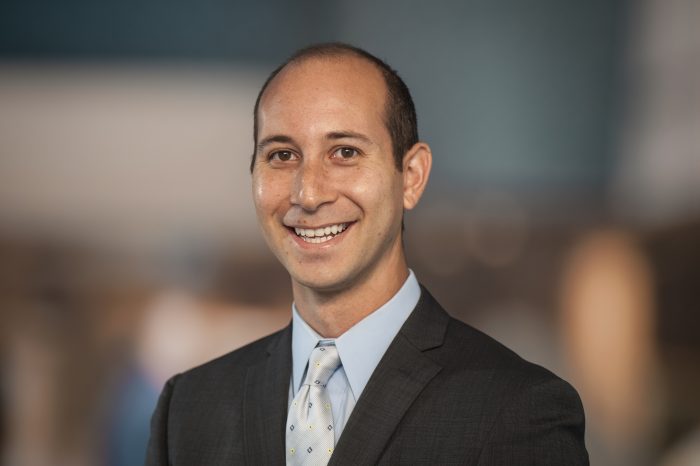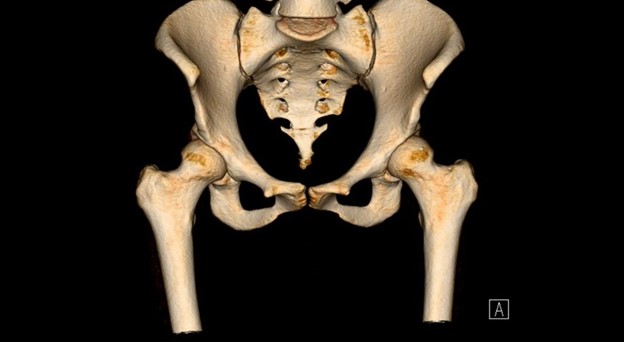
Dr. Todd Blumberg, program director of Seattle Children’s Child and Young Adult Hip Preservation Program, has helped build a new program that is truly one-of-a-kind in the Pacific Northwest. The program offers comprehensive and complete care for children, teens and young adults with a wide range of hip conditions.
Blumberg was born and raised in Texas. He graduated from medical school at Baylor College of Medicine. He completed his orthopedic surgery training at the University of Washington and then went on to complete pediatric orthopedic fellowship training at Children’s Hospital of Philadelphia, with additional fellowship training in hip preservation surgery at Boston Children’s Hospital.
We sat down with Blumberg to learn more about the program and his vision for helping children with hip issues live their most fulfilling life possible.
A focus on hips
When something is wrong with a child’s hips, it can affect their ability to thrive. At a young age, there may be difficulties with walking, but a child’s hip issues are generally not symptomatic until adolescence. Because hip dysplasia is relatively uncommon, especially compared to more common causes such as muscle strains and overuse injuries, the pain and discomfort is frequently misdiagnosed or dismissed. Although hip disorders are among the most common bone and joint problems in children, pediatric hip specialists are rare.
The focus of Seattle Children’s Child and Young Adult Hip Preservation Program is providing accurate and timely diagnoses and state-of-the-art treatment aimed at preserving the hip joint and restoring normal function and activities. If not appropriately diagnosed and treated, many childhood hip disorders can result in persistent hip pain and the development of early onset arthritis in adulthood.
“My goal is to make a child’s hip function biomechanically like a normal hip, said Blumberg. “We provide comprehensive treatment options to help children and young adults get back to living active lifestyles without pain and discomfort.”
Children with hip issues can be helped through nonsurgical or surgical treatment options. Blumberg says if a child needs to undergo surgery, seeing a provider who performs these procedures regularly is important.
“Many adult surgeons are used to performing hip replacement surgeries, not necessarily hip preservation procedures,” Blumberg said.
The need for special expertise
According to Blumberg, hip preservation is a relatively new field.
“No one in North America specialized in hip preservation 20 years ago,” Blumberg said. “When I came to Seattle Children’s in 2017, I saw a need to help pediatric patients with hip deformities. I wanted to create a program to meet their unique needs.”
Typically, there are three subsets of patients who develop hip issues.
“Developmental dysplasia of the hip(DDH) is the name for a wide variety of problems in the formation of children’s hips,” Blumberg said. “Some of these problems are present at birth while others develop as a child grows. The largest subset of patients we see are children with hip dysplasia,” Blumberg said. “Either a child is diagnosed with hip dysplasia from an early age, or the condition is so mild that it isn’t detected until adolescence. Other patients have a rare condition that can affect the hips. As a child gets older, their hip deformity can affect the mechanics of how the hip functions. Patients may also have abnormal mechanics because of trauma.”
Some of the hip conditions treated at Seattle Children’s include hip dysplasia, labral tears, femoroacetabular impingement (FAI), Perthes disease, and slipped capital femoral epiphysis(SCFE). Many patients do not have problems being active or develop hip pain until they are young adults, which can be a difficult age to seek treatment as many are setting off to study at college or starting their own careers.
“It became clear to me that we needed someone to focus on the unique challenges of all pediatric hip conditions, from infancy through early adulthood, and that spurred me to specialize in hip preservation,” Blumberg said. “The timing was serendipitous. It worked out so that I could take several months off to go Boston Children’s to train with surgeons who brought hip preservation techniques to the U.S. There aren’t many places that do these procedures; they are highly complex. I came back to Seattle right before COVID-19 hit. Since then, we’ve been building a vision for the program.”
Treating the full range of hip issues
Many patients come to Seattle Children’s from other places and need a second opinion.
“When you look at their X-rays,” said Blumberg, “sometimes the findings can seem unremarkable. But that doesn’t mean something isn’t wrong. Our job is to understand what is happening physiologically and mechanically. We use 3D imaging to help get a better, clearer picture. Using advanced imaging, including low-dose CT and high-resolution MRI, we can more effectively make, or in many cases, confirm a diagnosis. When we are developing a treatment plan, we always start with x-rays. But when symptoms do not resolve, we often pursue advanced 3D imaging to better understand what is happening both inside and around the hip joint. Ultimately, whether a child or young adult is experiencing a mild limp or severe pain, we simply want to get them feeling better and back to an active lifestyle.

Hip deformities can be caused by congenital or developmental factors or can occur after trauma or infection that affects the growth plate.
In a normally functioning hip, the head of the femur (which looks like a ball) fits snugly into the hip socket. Sometimes, the socket does not develop completely, or there is a mismatch in the shape of the femoral head and hip socket, leading to abnormal bony contact. These conditions may lead to hip pain and injury to the labrum, which over time starts to lead to regular pain and discomfort with activities. For patients that have not been able to get relief from physical therapy, activity modifications, and rest, surgery is one option that can improve the mechanics of the joint and prevent further damage.
“When abnormal mechanics occur, it can cause stress that gets concentrated on a small area,” Blumberg said. “The goal is to evenly distribute the forces around the hip. If you think of it like a balloon, it makes sense. Stress on a small, focused area will make the balloon pop, but that same balloon won’t pop if the stress is more distributed. That’s what we can correct through hip preservation techniques.
Last year, Blumberg performed about 30 hip preservation surgeries and saw incredibly rewarding results.
“Patients improved and got back to doing what they love,” he said. “It’s been really inspiring and is the reason we started this program.”
The importance of seeing a pediatric hip specialist
“Children are not little adults,” Blumberg siad. “We’ve created a comprehensive program that makes it easy for families to see the specialists they need when they need them. Our broad range of experience and expertise allow us to care for the most complex hip problems from infancy through young adulthood, but we’re not just geared toward coming up with solutions to solve today’s problems, we’re also helping prevent hip problems from occurring down the road.”
Blumberg says that Seattle Children’s is a special place.
“The institution itself has a storied history,” he said. “It started out as Children’s Orthopedic Hospital, and it still has its own dedicated department of orthopedics. To be able to return to an institution that cares and has such a significant contribution to the care of orthopedic patients was what brought me back. Today, I’m excited to be a part of a future that continues to care and bring hope to more children and young adults.”
To learn more or schedule an appointment with the The Child and Young Adult Hip Preservation Program at Seattle Children’s, call 206-987-2109.

